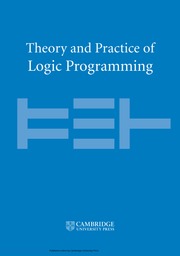No CrossRef data available.
Article contents
Solving functional constraints by variable substitution
Published online by Cambridge University Press: 04 February 2011
Abstract
Functional constraints and bi-functional constraints are an important constraint class in Constraint Programming (CP) systems, in particular for Constraint Logic Programming (CLP) systems. CP systems with finite domain constraints usually employ Constraint Satisfaction Problem(s)-based solvers which use local consistency, for example, arc consistency. We introduce a new approach which is based instead on variable substitution. We obtain efficient algorithms for reducing systems involving functional and bi-functional constraints together with other nonfunctional constraints. It also solves globally any CSP where there exists a variable such that any other variable is reachable from it through a sequence of functional constraints. Our experiments on random problems show that variable elimination can significantly improve the efficiency of solving problems with functional constraints.
Keywords
Information
- Type
- Regular Papers
- Information
- Theory and Practice of Logic Programming , Volume 11 , Special Issue 2-3: The 24th International Conference on Logic Programming (ICLP 2008) , March 2011 , pp. 297 - 322
- Copyright
- Copyright © Cambridge University Press 2011

